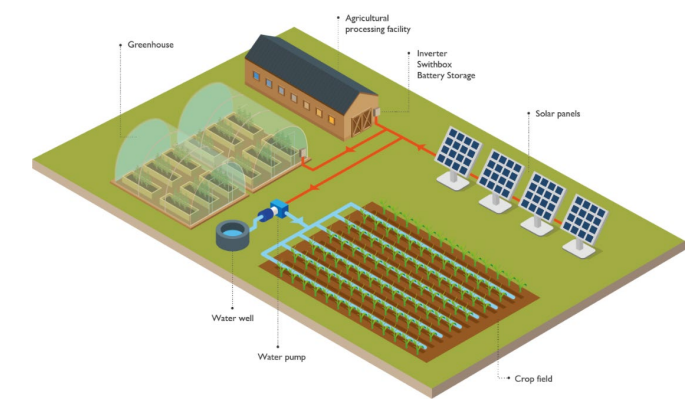The following section describes typical solar PV project types as defined in the legal and regulatory framework of Kosovo. These definitions are then used throughout the reports.
LARGE SOLAR PV GENERATORS
Large solar photovoltaic (PV) generators in Kosovo are considered those with installed capacity over 100 kW. If the generator is part of the Support Scheme, i.e., project benefiting from the 12-year guaranteed Power Purchase Agreement with Feed-in Tariff, priority dispatch and liable for only 25% of their disbalance, then the maximum allowed size of single project is limited to 3 MW. Large solar PV projects may be connected to the distribution or transmission network. Figure 1 illustrates a typical large solar PV project in Kosovo.
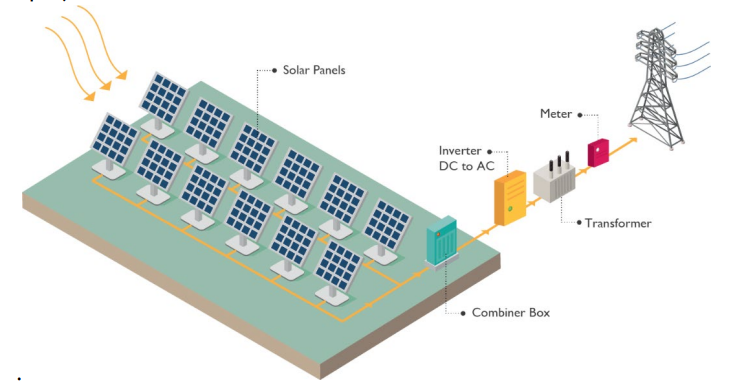
PROSUMERS (SELF-CONSUMPTION GENERATORS)
Any customer (households, business, and public institutions) connected to the low-voltage distribution network is allowed to install a small (<100kW) solar PV system to meet part of their own demand as a cost saving measure or to reduce their CO2 footprint. If the customer is authorized by Energy Regulatory Office to construct such installation and meets the technical and legal conditions, then the customer is admitted to the Support Scheme and obtains status of a “Prosumer”. Figure 2. Illustrates a business with status of a Prosumer.><100kW) solar PV system to meet part of their own demand as a cost saving measure or to reduce their CO2 footprint. If the customer is authorized by Energy Regulatory Office to construct such installation and meets the technical and legal conditions, then the customer is admitted to the Support Scheme and obtains status of a “Prosumer”. Figure 2. Illustrates a business with status of a Prosumer.
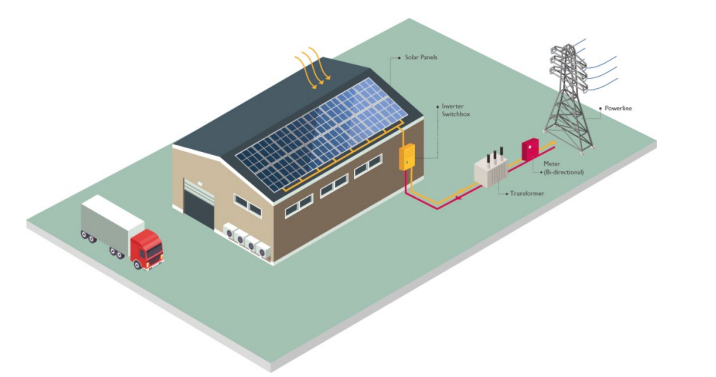
To improve bankability of the small PV installations, Prosumers are allowed to inject excess electricity to the grid that is metered by a bi-directional meter and credited to future energy consumption within the same billing period. This is known as net-metering or Prosumer support scheme.
When the PV system does not generate enough to cover their electricity demand, a Prosumer receives electricity from the grid, similar to regular customers. Figure 3 illustrates a typical household Prosumer.
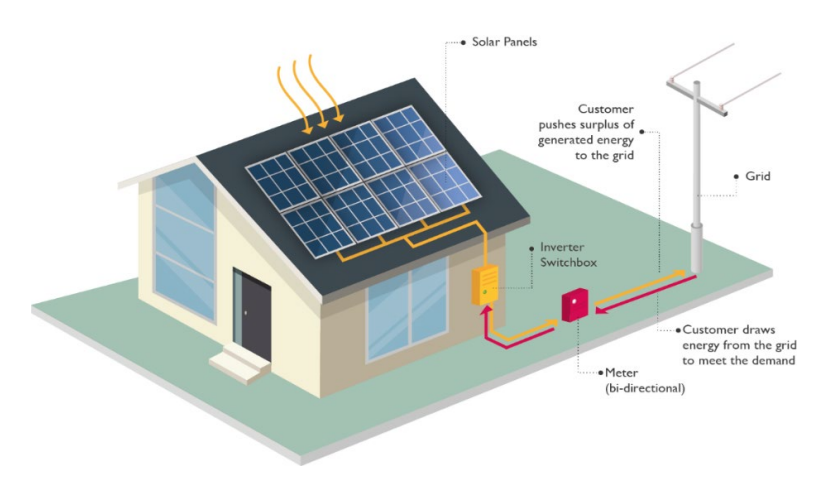
BEHIND-THE-METER PV INSTALLATIONS
Any consumer of electricity can install any size solar PV installation to meet their entire or part of their electricity demand as their own internal electricity supply option, a cost saving measure by offsetting their energy consumption from the grid, or to reduce their CO2 footprint. The entire generated electricity from such solar PV system is consumed internally and no electricity is injected to the grid. Hence, this type of system is referred throughout this report as Behind-the-meter system or as industry refers to “zero export” installation. Figure 4 illustrates a typical business with Behind the meter solar PV installation.
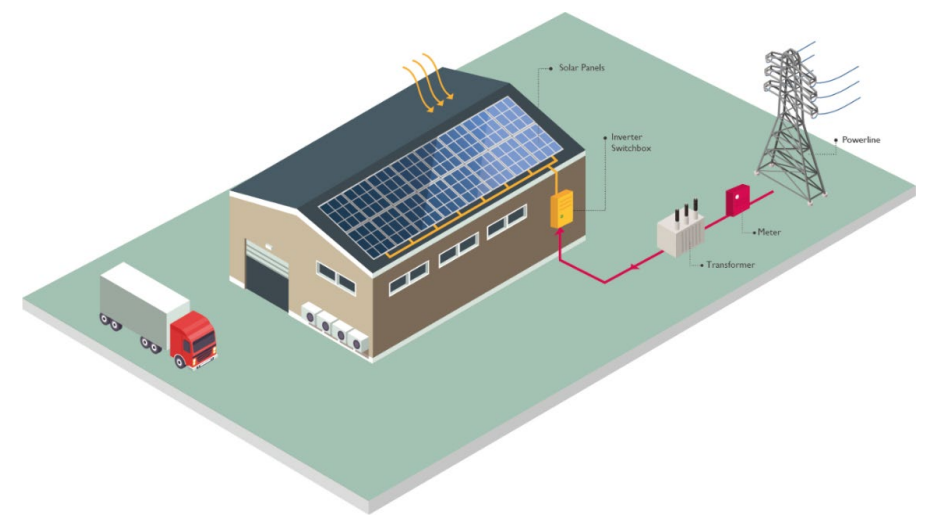
Figure 5 below illustrates a typical Behind-the-meter household installation
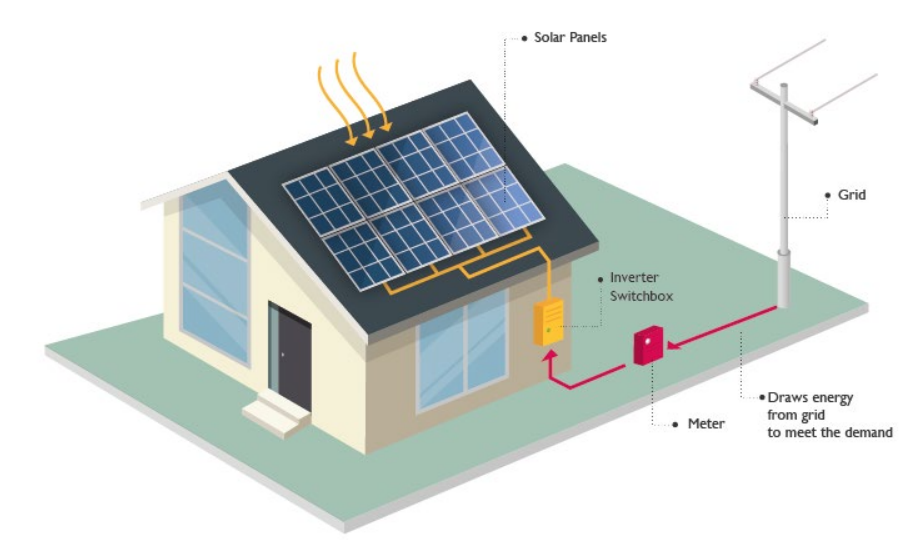
In case such consumer is also a customer of the electricity supply company they continue to receive regular electricity supply from the grid when their solar PV system does not meet the demand.
OFF-GRID SOLAR PV
There are more than a thousand solar PV installations throughout Kosovo that are completely off-grid (meaning they are not connected to the grid). These types of solar PV installations which are found mainly in agricultural sector are used for water pumping or providing electricity supply to green-houses or processing facilities in the remote areas. These projects are supported through agricultural grants. Figure 6 below illustrates a solar generator in agriculture.
